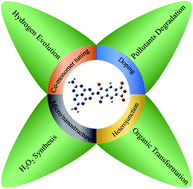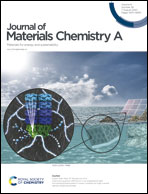Polyimide-based photocatalysts: rational design for energy and environmental applications
Abstract
Semiconductor photocatalysis is a promising technology to address both energy and environmental issues. Polymer semiconductors have emerged as a new class of heterogeneous photocatalysts owing to their inherent advantages of low cost, earth abundant nature, facile synthesis, easy functionalization, molecularly tunable optoelectronic properties, and high physicochemical stability. Polyimide (PI), a conventional polymer widely used in separation, coating, aerospace and microelectronics industries, has recently received considerable attention for photocatalytic applications. In this review, we present a comprehensive summary of the development of PI-based photocatalysts. First, a brief introduction of synthetic methods of PI is given. Then, we present and categorize several strategies, including co-monomer tuning, element/molecular doping, micro/nanostructure engineering, and junction engineering, that are relevant to physicochemical properties and photocatalytic activities. Moreover, various applications of PI-based photocatalysts, such as photocatalytic H2 evolution, photodegradation of organic contaminants, H2O2 photosynthesis from H2O and O2, and photocatalytic organic transformation are summarized. Special emphasis is placed on the structure–property relationships for designing polymer photocatalysts with improved photocatalytic performance. Finally, we discuss the future development and prospects for PI-based photocatalysts.



 Please wait while we load your content...
Please wait while we load your content...